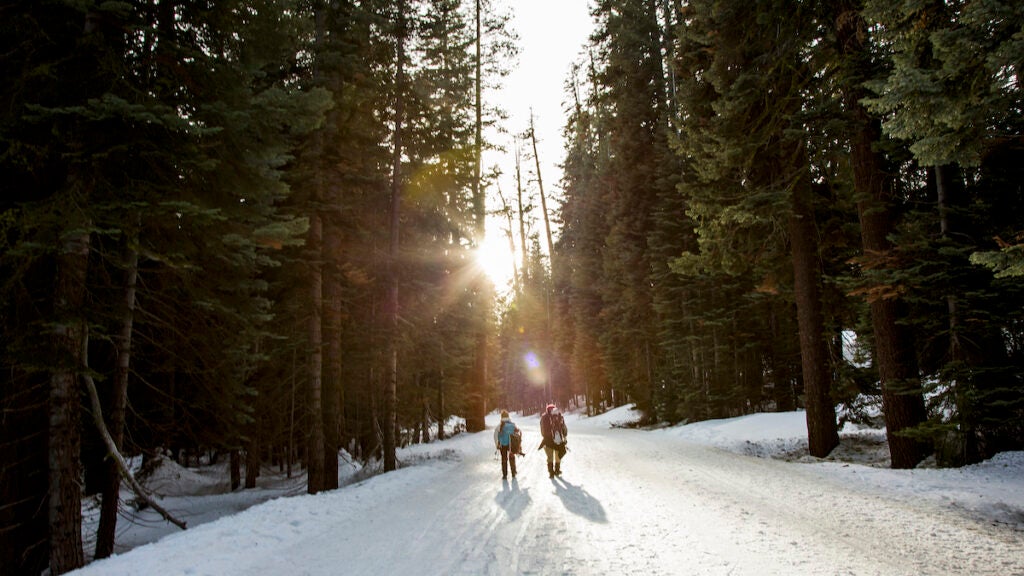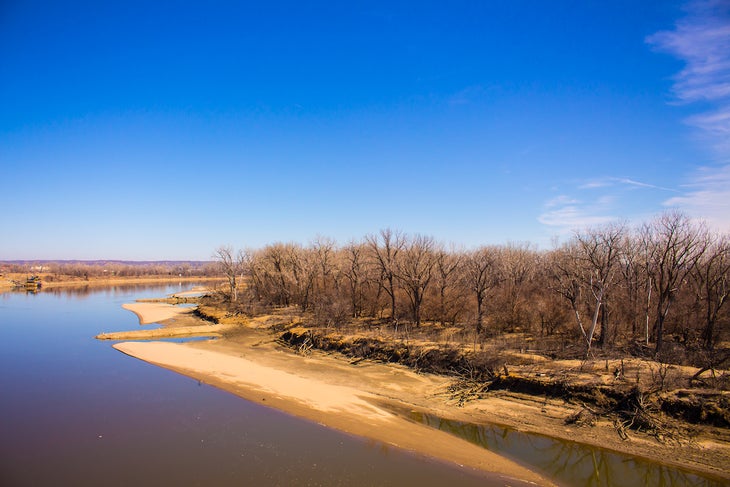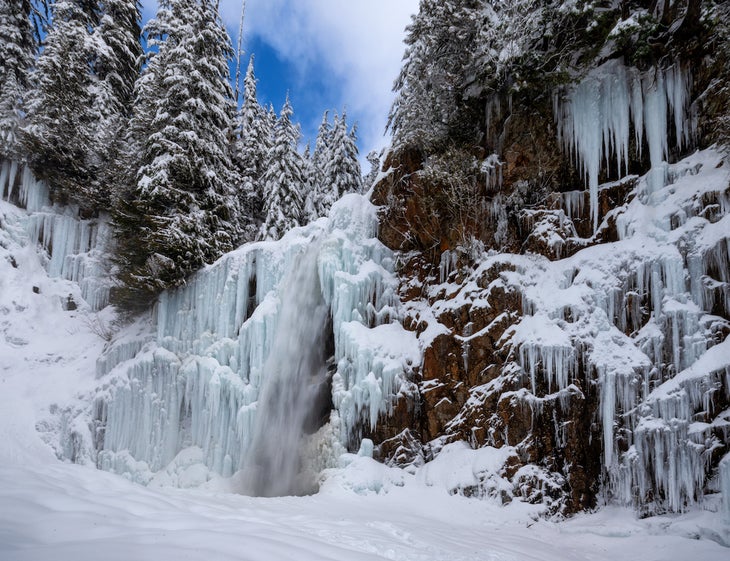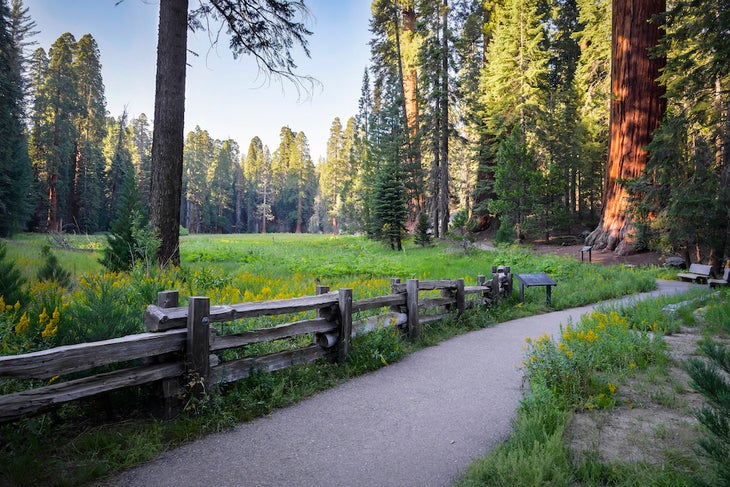



In our travel column, assistant editor Emma Veidt answers your hiking questions with the help of a rotating cast of experts.
I’ve always been a fair-weather hiker, but lately, I’m finding myself wishing that I could spend the colder months on the trail too. The problem: I don’t have any experience with winter hiking. How can I find some easy, safe trails for practicing the craft? —Snow Way to Hike
Dear Snow Way,
So the hiking trails that you trod effortlessly in the summer and fall are now forming a layer of ice or snow. If this isn’t something you’re used to, it would be easy to hide away for a couple months and just wait out the weather. No judgment, I certainly used to be like that.
But there’s no reason to stop hiking during one of the most beautiful, and serene, seasons to spend outdoors. Like most things, you have to ease your way into winter hiking. There are lots of trails around the country that are accessible year-round, no need for technical training or heavy-duty winter gear.
Becoming a winter hiker doesn’t require travel so some far-off land covered in snow and ice: You can give it a try on your local trails. Just be sure to keep the terrain easy and mileage low to acclimate yourself. Bring plenty of layers, including those that keep your extremities warm, such as gloves, beanies, or a neck gaiter. When hiking on ice and snow, bring traction devices such as microspikes. But for your best couple of winter hikes, it’s best to find trails without it or time the hike before the first big snowfall.
There are a handful of trails that are the easiest and safest to go on your first winter hike. Here are a few short dayhikes that are so enchanting in winter that you just might actually look forward to them every year.

If you have genuinely no experience with winter hiking, Garden of the Gods—one of the prettiest city parks in the United States—is a good place to start. At 6,400 feet in elevation and with Pike’s Peak in view, this park gets some snow or light ice patches in the winter. But many of the trails are relatively flat, so you can hike them without spikes if you have a grippy pair of hiking boots or trail runners. The views on this one will distract you from any chill in the air: In 2.5 miles, you’ll pass by roaming bighorn sheep, deer, and lots of snow-dusted natural formations, like the “Siamese Twins.” These are the same views that captivated Charles Perkins when he purchased 240 acres in the Garden of the Gods in 1897 to make a summer home. Instead of developing on the land, he decided to keep it in its natural state to preserve its beauty.

This 6-mile hike is one of the most strenuous in the state, with a couple steep sections in mixed terrain. It’s also one of the most scenic, especially in the winter, where every step offers a view you can’t see in the summer. You can look past the leafless, naked hardwood trees surrounding the trails, down to the Missouri River and its surrounding bluffs created from wind-deposited soil. You can also hear the ASMR crunch of frost under your feet on this hike, but conditions don’t get bad enough that you need highly specialized winter gear. Be sure to bring warming, windproof layers and check snow conditions before hitting the trailhead. Need to take a beat just to warm up? Hunker down for a snack break in one of the Adirondack shelters along the trail, which you can reserve online for overnight use.

Only an hour from Seattle, you can visit a natural—if abstract—ice sculpture. In winter, this 135-foot-high torrent turns into a globby piece of art that looks like the wax dripping off a candlestick, drawing hibernal hikers in search of a spectacle. That makes it the perfect spot to try out winter hiking at your own pace. There’s always an annual road closure this time of year, so you’ll have to park in the Asahel Curtis Sno-Park and hike about 2 miles from the trailhead. This adds 4 miles to the trip, which isn’t too bad considering that the hike to the falls is only 2. Don’t worry though, the majority of this add-on is on paved roads before you hit an old-growth forest carpeted with compact snow. The real beauty of this trail, the frozen falls, is worth any hassle you’d have with parking. Some winter hikers suggest bringing microspikes for the final short climb to the base of the falls and for a rogue ice patch here and there.

Look up on this 1.3 mile loop, and you’ll see snow-blanketed sequoia branches all above you. This trail won’t take you to the General Sherman Tree, the largest tree in the world and a major draw for park visitors, but the tradeoff is solitude. Rather than dirt, you’ll step on a raised boardwalk that the parks service maintains during the winter, which means beginner winter hikers can test the (icy) waters here and thrive. Sometimes, packed snow covers the boardwalk, which is fine to cross in just hiking boots, but because this park is in the higher elevations, watch out for ice. (Some hikers recommend wearing a pair of microspikes for surefootedness, so ask the rangers about conditions and use your judgment.) Beginner winter hikers should go slow, which is easy on this trail when you want to look all around you to take in the sheer size of these trees. Need a place to stop and take a break along the way? Lots of information panels line the path, with facts and detailed information on the history of this area, and there are lots of benches, too.
From 2023

